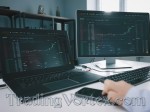Table Of Contents:
- Understanding Margin Calls in Forex Trading:
Margin Trading Basics:
How Margin Works in Forex?
Margin Call Explained:
The Margin Call Process:
Impact of Margin Calls:
Risk Management Strategies:
Avoiding Margin Calls:
Dealing with a Margin Call:
Margin Call vs. Margin Stop-Out in Forex:
Common Questions About Forex Margin Calls:
Conclusion: Mastering Margin Calls in Forex Trading.
Understanding Margin Calls in Forex Trading:
What is a Margin Call in Forex?
In Forex trading, leverage allows traders to control a large position with a relatively small amount of capital. While this can amplify profits, it also exposes traders to higher risks. Margin is the collateral required by the broker to open and maintain a leveraged position. It is typically expressed as a percentage of the total position size. For example, if your broker requires a 1% margin, you can control a $100,000 position with just $1,000 in your trading account.
A margin call occurs when the equity in your trading account falls below a certain threshold, often due to trading losses. This threshold is known as the maintenance margin level. When this happens, the broker will issue a margin call, demanding that you deposit additional funds to bring your account's equity back above the maintenance margin level.
Why Understanding Margin Calls is Crucial?
Understanding margin calls is absolutely essential for Forex traders, whether you're a novice or a seasoned pro. Here's why:
- Risk Management: Forex trading is inherently risky, and leverage can magnify those risks. Knowing how margin calls work is fundamental to managing these risks effectively. It's your first line of defense against catastrophic losses.
- Capital Preservation: A margin call, if not handled properly, can lead to a loss of your trading capital. By understanding margin calls, you can take proactive steps to preserve your capital and avoid being liquidated out of a trade.
- Trading Strategy: Margin calls can influence your trading strategy. Knowing when and how they might occur allows you to adapt your trading plan accordingly, including setting appropriate stop-loss orders and position sizes.
Importance of Risk Management in Forex:
Risk management is the cornerstone of successful Forex trading, and margin calls are a critical component of this strategy. Here are key aspects of risk management related to margin calls:
- Stop-Loss Orders: Placing stop-loss orders at strategic levels can limit potential losses and reduce the likelihood of margin calls.
- Position Sizing: Properly sizing your positions based on your account balance and risk tolerance is crucial. Overleveraging can lead to frequent margin calls.
- Diversification: Spreading your investments across different currency pairs can help mitigate the impact of a single bad trade.
- Education: Educate yourself about the risks of margin trading and margin calls. Knowledge is your best defense.
Margin Trading Basics:
The Fundamentals of Margin Trading:
The process of margin trading involves the following key elements:
- Leverage: Leverage ratios determine how much capital a trader can control with a smaller amount in their account. Common leverage ratios include 50:1, 100:1, and even higher. For instance, with 100:1 leverage, a trader can control a position worth $100,000 with just $1,000 in their account.
- Margin: Margin is the collateral required by the broker to cover potential losses in a leveraged position. It is usually expressed as a percentage of the total position size. A typical margin requirement might be 1%, which means you need to have 1% of the total position value in your account to open the trade.
- Margin Level: This is the ratio of your account's equity to the margin required to maintain your open positions. A healthy margin level ensures that you have enough funds to cover potential losses and avoid margin calls.
Leverage in Forex: A Double-Edged Sword.
Leverage is a defining feature of Forex trading, but it's a double-edged sword. While it can amplify profits, it also magnifies losses, making it a powerful yet potentially risky tool. Here's a closer look at leverage in Forex:
Pros of Leverage:
- Amplified Profits: Leverage allows traders to make more significant profits with a relatively small initial investment.
- Accessibility: It makes Forex trading accessible to a broader range of participants who may not have substantial capital.
Cons of Leverage:
- Increased Risk: High leverage increases the risk of significant losses. Even small price movements can lead to substantial losses when using high leverage.
- Margin Calls: Trading with leverage increases the likelihood of margin calls, which can result in the loss of your trading capital if not managed properly.
Advantages and Risks of Leveraged Trading:
Advantages:
- Capital Efficiency: Leverage allows traders to control more significant positions with less capital, potentially maximizing returns.
- Diversification: It enables traders to diversify their portfolios by opening multiple positions across different currency pairs or asset classes.
- Short Selling: Leverage permits traders to profit from both rising (going long) and falling (going short) markets.
- Accessibility: It lowers the entry barrier for new traders who may not have substantial funds to start with.
Risks:
- Increased Losses: High leverage can result in significant losses that exceed the initial investment, potentially leading to a margin call.
- Limited Risk Management: Overleveraging can limit the effectiveness of risk management strategies like stop-loss orders.
- Emotional Stress: Trading with high leverage can be emotionally taxing, causing stress and impulsive decision-making.
How Margin Works in Forex?
Margin Requirements: What You Need to Know?
- Percentage-Based: Margin requirements are typically expressed as a percentage of the total position size. Common margin requirements might be 1%, 2%, or 5%, depending on the broker and the currency pair being traded.
- Leverage and Margin: Higher leverage allows traders to control larger positions with a smaller margin requirement. For example, with 100:1 leverage, you may only need $1,000 in your account to control a $100,000 position.
- Broker's Discretion: Brokers set their own margin requirements, and these can vary significantly. Exotic currency pairs or highly volatile markets may have higher margin requirements to account for increased risk.
Initial Margin vs. Maintenance Margin: Key Differences.
Understanding the distinction between initial margin and maintenance margin is crucial in grasping how margin works effectively:
- Initial Margin: This is the amount of capital required to open a position. It serves as collateral to cover potential losses from the outset of the trade. Once you meet the initial margin requirement, you can open the trade.
- Maintenance Margin: Maintenance margin is the minimum account balance required to keep a position open. If your account balance falls below this level due to trading losses, a margin call is triggered.
Calculating Margin Levels Effectively:
To navigate margin trading successfully, you must calculate and monitor margin levels diligently. Here's how you can calculate margin levels:
- Equity: The current balance of your trading account.
- Used Margin: The amount of your account balance that is currently being held as margin for your open positions.
- Maintenance Margin Level: This is typically expressed as a percentage, often set by the broker. When your margin level falls below the maintenance margin level, a margin call is likely to occur.
- Using Margin Calculators: Many trading platforms and online tools offer margin calculators that help you determine your margin requirements for specific trades and monitor your margin levels in real time.
Understanding and correctly calculating margin levels are critical for managing your positions effectively and avoiding margin calls.
Margin Call Explained:
Defining a Margin Call in Forex:
A margin call in Forex is a critical event that occurs when a trader's account no longer has sufficient equity to meet the maintenance margin requirement set by their broker. In simpler terms, it's a broker's demand for additional funds to cover potential losses in a leveraged position. A margin call serves as a safeguard for both the trader and the broker, preventing accounts from going into negative balances.
When a margin call is issued, the trader must either deposit more funds into their account or close some of their open positions to bring their account's equity back above the maintenance margin level. Failure to do so can result in the broker automatically closing out the trader's positions to limit further losses.
Common Triggers for Margin Calls:
Several factors can trigger a margin call:
- Trading Losses: The primary trigger for a margin call is trading losses. If your trades move against you and your account's equity drops below the maintenance margin requirement, a margin call is likely.
- Increased Leverage: Using high leverage increases the risk of margin calls. While it can amplify profits, it also magnifies losses, making it easier to breach the maintenance margin level.
- Volatility: Highly volatile markets can lead to rapid price fluctuations, increasing the likelihood of margin calls, especially if stop-loss orders are not in place.
- Overleveraging: Overcommitting your account balance to multiple positions or using excessive leverage can deplete your equity rapidly, leading to margin calls.
The Role of Brokers in Margin Calls:
Brokers play a crucial role in managing margin calls:
- Monitoring: Brokers continuously monitor their clients' accounts to ensure compliance with margin requirements. They calculate margin levels and issue margin calls when necessary.
- Communication: Brokers typically notify traders promptly when a margin call occurs. Communication is essential to give traders a chance to respond and take appropriate actions.
- Liquidation: If a trader fails to meet a margin call by depositing additional funds or closing positions, the broker has the authority to automatically liquidate the trader's positions to limit losses.
Why Margin Calls are a Risk Management Tool?
Margin calls are not punitive measures by brokers; rather, they are risk management tools designed to protect both parties involved in a trade. Here's why margin calls are essential:
- Capital Preservation: Margin calls help preserve a trader's capital. By closing out positions at a predefined margin level, they prevent further losses and protect the trader from account depletion.
- Broker Protection: Margin calls also safeguard brokers by ensuring they can cover potential losses incurred by traders. This prevents brokers from facing financial instability due to excessive client losses.
- Risk Awareness: Margin calls serve as a wake-up call for traders. They emphasize the importance of risk management and proper use of leverage.
Understanding the nuances of margin calls is vital for your success as a Forex trader.
The Margin Call Process:
Step-by-Step: What Happens During a Margin Call?
Understanding the sequence of events during a margin call is crucial for traders. Here's a step-by-step breakdown of what typically happens:
- Falling Equity: Your trading account experiences losses, causing your equity to drop below the maintenance margin requirement.
- Margin Level Alert: The broker's system recognizes the decline in your equity and sends an alert, notifying you that your margin level is approaching a critical level.
- Margin Call Issued: If your equity continues to fall and breaches the maintenance margin level, the broker issues a margin call. This is typically communicated through email, SMS, or a notification within your trading platform.
- Response Required: Upon receiving the margin call, you have a limited time to respond. You must decide whether to deposit additional funds to cover the margin deficit or close some of your open positions.
- Automatic Liquidation: If you fail to meet the margin call by either depositing funds or closing positions, the broker may automatically start liquidating your positions to reduce the margin deficit.
- Liquidation Priority: The broker typically closes out the positions with the most significant losses first to minimize the deficit. This process continues until your margin level is restored.
Notifications and Communication in Margin Calls:
Communication is a vital aspect of the margin call process:
- Timely Notifications: Brokers are required to notify you promptly when a margin call occurs. This notification can come via email, SMS, or within your trading platform. It's essential to check your messages regularly while trading.
- Clear Instructions: Margin call notifications often include clear instructions on how to respond. They may provide details on depositing funds, closing positions, or contacting customer support for assistance.
- Margin Call Deadline: There is usually a specified time frame within which you must respond to the margin call. It's crucial to act swiftly to avoid automatic liquidation.
- Broker Support: If you have questions or need assistance during a margin call, brokers typically offer customer support to guide you through the process.
How Margin Calls Impact Your Trading Account?
The impact of a margin call on your trading account can be significant:
- Position Liquidation: If you don't respond promptly to a margin call, the broker will start liquidating your positions. This can result in realized losses and potentially wipe out your trading capital.
- Losses and Account Depletion: Even if you respond to the margin call, you may still incur losses from closing positions at less favorable prices. Moreover, your account balance may significantly decrease.
- Emotional Stress: Dealing with a margin call can be emotionally challenging. The pressure to make quick decisions and the fear of losing capital can cause stress and anxiety.
- Trading Strategy Impact: Margin calls can force you to deviate from your trading strategy, potentially leading to suboptimal decisions.
Understanding the margin call process is essential for traders to respond effectively and protect their trading capital.
Impact of Margin Calls:
Consequences of Ignoring a Margin Call:
Ignoring a margin call in Forex trading can have far-reaching consequences, both financially and emotionally:
- Loss of Capital: Failure to respond to a margin call often results in the automatic liquidation of your positions. This can lead to substantial losses, potentially depleting your trading capital.
- Account Closure: In extreme cases, if your losses exceed your account balance, your broker may close your account, leaving you unable to continue trading.
- Damaged Credit: Outstanding debts resulting from a margin call can negatively impact your credit score and financial standing.
- Psychological Stress: The stress of facing significant losses and the consequences of ignoring a margin call can take a toll on your mental well-being, affecting your decision-making abilities in future trades.
Real-Life Case Studies: Learning from Margin Call Scenarios.
Real-life case studies offer valuable insights into the impact of margin calls:
- Case Study 1: Rapid Market Movements: A trader heavily leveraged on a volatile currency pair. Unexpected news caused a sudden and sharp market movement against the trader's position. Ignoring the margin call led to automatic liquidation, resulting in a loss of the entire trading account.
- Case Study 2: Margin Call Response: In contrast, another trader received a margin call but promptly responded by depositing additional funds to cover the margin deficit. This quick action prevented position liquidation and allowed the trader to continue trading with reduced risk.
- Case Study 3: Psychological Toll: A trader who experienced multiple margin calls within a short period faced psychological stress and emotional turmoil. These experiences affected the trader's confidence and decision-making abilities, leading to further losses.
The Psychological Toll of Margin Calls:
The psychological impact of margin calls cannot be underestimated:
- Stress and Anxiety: Margin calls can induce stress and anxiety, particularly if they result in significant losses or the fear of losing one's trading capital.
- Fear and Hesitation: Traders who have faced margin calls may become more risk-averse, leading to hesitation in making trades, missing potential opportunities for profit.
- Overtrading: Some traders, eager to recover losses from margin calls, may engage in impulsive and overaggressive trading, which can exacerbate their problems.
- Loss of Confidence: Repeated margin calls or a single substantial loss can erode a trader's confidence, making it difficult to execute trades with conviction.
- Psychological Resilience: Developing the psychological resilience to handle margin calls and losses is a critical aspect of long-term success in Forex trading.
In the following sections, we will explore effective risk management strategies to avoid margin calls and the associated consequences. These strategies aim to help traders safeguard their capital and maintain emotional well-being, ensuring a more stable and profitable trading journey in the Forex market. Understanding the psychological impact and real-world consequences of margin calls underscores their significance in the world of Forex trading.
Risk Management Strategies:
Effective risk management is the cornerstone of successful Forex trading. By implementing sound risk management strategies, traders can minimize the likelihood of margin calls and protect their capital. Here are key risk management techniques:
Setting Stop-Loss Orders: A Vital Risk Management Tool.
- Defining Stop-Loss Orders: A stop-loss order is a predefined price level at which a trade is automatically closed to limit potential losses. It's a crucial risk management tool that ensures you exit a losing trade before it spirals into a significant loss.
- Strategic Placement: Traders should determine stop-loss levels based on technical analysis, support and resistance levels, and market volatility. Placing stop-loss orders too close to the entry point can result in premature exits, while setting them too wide can expose the account to larger losses.
- Trailing Stop-Loss: Some traders use trailing stop-loss orders that adjust automatically as the trade moves in their favor. This allows for locking in profits while minimizing the risk of losses.
Determining Proper Position Sizes for Your Trades:
- Risk-to-Reward Ratio: Traders should calculate and adhere to a risk-to-reward ratio for each trade. This ratio determines the potential profit relative to the potential loss. Common ratios include 1:2 or 1:3, indicating that for every dollar at risk, the trader aims to make two or three dollars in profit.
- Position Sizing Calculations: Proper position sizing ensures that each trade's potential loss aligns with the trader's risk tolerance and account size. Position size is determined by the stop-loss distance and the percentage of the account balance at risk.
- Avoiding Overleveraging: Overleveraging can lead to oversized positions that increase the risk of margin calls. Traders should use leverage judiciously and adjust their position sizes accordingly.
Diversification: Spreading Risk Across Assets.
- Asset Selection: Diversification involves trading multiple currency pairs or assets rather than concentrating all trading activity on one. This strategy spreads risk and reduces exposure to the movements of a single asset.
- Correlation Analysis: Traders should consider the correlation between assets. Correlated assets tend to move in the same direction, so diversifying with uncorrelated assets provides better risk mitigation.
Advanced Risk Management Techniques:
- Hedging: Some traders use hedging strategies to offset potential losses. This involves opening positions in opposite directions on correlated assets to limit risk.
- Use of Options: Advanced traders may incorporate options strategies to hedge against adverse price movements. Options provide flexibility in managing risk.
- Portfolio Risk Management: For those managing larger portfolios, a comprehensive risk management plan that considers the collective risk of all trades is essential. This includes analyzing correlations, leverage, and exposure to specific assets.
- Stress Testing: Traders can stress test their trading strategies by simulating extreme market conditions to assess how their portfolio would perform under adverse scenarios.
By implementing these risk management strategies, traders can proactively mitigate the risks associated with margin trading in the Forex market. The goal is to strike a balance between maximizing potential profits and safeguarding trading capital, ultimately reducing the likelihood of margin calls and promoting a more sustainable and profitable trading journey.
Avoiding Margin Calls:
Avoiding margin calls is a primary objective for Forex traders. By implementing proactive margin management practices and utilizing the available tools, traders can reduce the risk of encountering margin calls. Here's how:
Best Practices for Proactive Margin Management:
- Maintain Adequate Margin: Always aim to have a comfortable margin buffer above the maintenance margin requirement. This reduces the risk of approaching the margin call threshold during market volatility.
- Leverage Wisely: Use leverage judiciously and avoid excessive leverage ratios. Higher leverage increases the likelihood of margin calls.
- Set Realistic Goals: Establish achievable profit targets and risk tolerance levels for each trade. This helps in determining appropriate position sizes and stop-loss levels.
- Regularly Reassess Positions: Periodically review your open positions and assess their risk. Adjust stop-loss orders and position sizes as market conditions evolve.
Monitoring Margin Levels Effectively:
- Use Margin Calculators: Leverage margin calculators and risk management tools provided by your trading platform. These tools help you calculate margin requirements for specific trades and monitor margin levels in real time.
- Frequent Account Review: Regularly check your trading account to ensure it aligns with your risk management plan. Monitor your equity, margin levels, and open positions.
- Account Alerts: Set up account alerts with your broker to receive notifications when your margin level approaches critical levels. Timely alerts allow you to take proactive actions.
Utilizing Trading Alerts and Tools for Risk Mitigation:
- Trading Alerts: Most trading platforms offer customizable alerts that can notify you of price movements, margin level changes, or news events. Utilize these alerts to stay informed and make timely decisions.
- Economic Calendars: Stay informed about economic events and news releases that can impact the Forex market. Economic calendars provide schedules of such events, allowing you to adjust your trading strategy accordingly.
- Risk Management Tools: Explore advanced risk management tools offered by brokers, such as guaranteed stop-loss orders or guaranteed take-profit orders. These tools provide an extra layer of protection.
- Demo Trading: If you're new to Forex trading or testing a new strategy, consider using a demo account. This allows you to practice risk management without real capital at stake.
By incorporating these best practices and utilizing the available tools, traders can significantly reduce the risk of encountering margin calls in their Forex trading endeavors. The key is to proactively manage margin levels, stay informed about market conditions, and always prioritize capital preservation. This approach not only helps traders avoid the consequences of margin calls but also promotes a more successful and sustainable trading experience.
Dealing with a Margin Call:
Encountering a margin call can be a daunting experience for Forex traders. How you respond to a margin call can significantly impact your trading account and future performance. Here's how to navigate this challenging situation:
Immediate Actions to Take When a Margin Call Occurs:
- Stay Calm: The first and most crucial step is to remain composed and avoid making impulsive decisions. Panic can lead to further losses.
- Review Your Account: Log in to your trading platform and assess the current state of your account. Check your margin level, open positions, and equity.
- Contact Support: If you're uncertain about how to respond to the margin call, consider reaching out to your broker's customer support. They can provide guidance and clarification on your options.
- Close Unnecessary Positions: If you have multiple open positions, consider closing those that are less favorable or unrelated to your trading strategy. This can free up margin and reduce risk.
- Deposit Additional Funds: If you have available capital, you can deposit additional funds into your trading account to cover the margin deficit. This is a proactive way to stabilize your account.
Strategies for Recovery After a Margin Call:
- Assess Your Strategy: After addressing the immediate margin call, take a step back to evaluate your overall trading strategy. Identify any weaknesses or patterns that contributed to the margin call.
- Adjust Risk Management: Revisit your risk management plan. Ensure that your position sizes, stop-loss orders, and leverage ratios align with your risk tolerance and trading goals.
- Demo Trading: Consider practicing with a demo account to regain confidence and test new strategies without risking real capital.
- Gradual Return: If you suffered significant losses, consider gradually returning to live trading with smaller position sizes. This allows you to rebuild confidence and minimize risk.
- Continuous Learning: Education is key to improvement. Invest time in learning more about Forex markets, technical and fundamental analysis, and risk management strategies.
Seeking Professional Advice: When and Why.
- Financial Advisor: If you've experienced multiple margin calls or substantial losses, it may be prudent to consult a financial advisor. They can provide personalized guidance on risk management and financial planning.
- Trading Mentor: Consider seeking guidance from an experienced trading mentor or joining a trading community. Learning from those with more experience can help you avoid common pitfalls.
- Psychological Support: Margin calls can take a toll on your mental well-being. If you find it challenging to manage the psychological aspects of trading, consider consulting a therapist or counselor.
Dealing with a margin call is an integral part of a trader's journey. While it can be a setback, it also offers an opportunity for reflection, improvement, and growth. By responding calmly, taking appropriate actions, and seeking professional guidance when necessary, traders can navigate margin calls and continue their pursuit of success in the Forex market.
Margin Call vs. Margin Stop-Out in Forex:
Understanding the distinctions between a margin call and a margin stop-out is crucial for Forex traders. These terms represent distinct stages in the risk management process of Forex brokers. Let's delve into the differences and implications of each:
Understanding Margin Call vs. Margin Stop-Out:
Margin Call:
- Trigger Point: A margin call occurs when a trader's account equity falls below the broker's maintenance margin requirement but is still above the margin stop-out level.
- Purpose: It serves as an initial warning to traders that their account is at risk of falling below the minimum margin required to maintain open positions.
- Response Time: Traders have time to respond, either by depositing additional funds or closing positions, to bring their account equity above the maintenance margin level.
Margin Stop-Out:
- Trigger Point: A margin stop-out happens when a trader's account equity falls below the broker's maintenance margin requirement and reaches the broker's specified margin stop-out level.
- Purpose: It is a protective measure implemented by the broker to limit further losses in the trader's account.
- Automatic Liquidation: Once the margin stop-out level is reached, the broker will automatically liquidate the trader's positions to prevent the account from going into a negative balance.
Implications of Margin Call and Margin Stop-Out Differences:
Understanding the differences between margin calls and margin stop-outs can have significant implications for traders:
Margin Call Implications:
- Margin calls serve as an early warning, allowing traders time to take corrective actions.
- Traders have the opportunity to deposit additional funds or close positions strategically to avoid further losses.
- Margin calls do not result in immediate position liquidation.
Margin Stop-Out Implications:
- Margin stop-outs are the broker's last line of defense to protect against account deficits.
- Automatic position liquidation occurs at the margin stop-out level, which can result in realized losses.
- Traders may not have control over which positions are liquidated, potentially leading to suboptimal outcomes.
How to Differentiate Between the Two?
To differentiate between a margin call and a margin stop-out, traders can take the following steps:
- Review Broker Policies: Familiarize yourself with your broker's specific margin call and margin stop-out levels. These levels can vary among brokers.
- Regularly Monitor Account: Keep a close eye on your account's equity, margin levels, and open positions. Most trading platforms provide real-time account information.
- Set Alerts: Configure alerts within your trading platform or broker account to receive notifications when your margin level approaches the margin call and margin stop-out levels.
- Read Notifications: Pay careful attention to any notifications or messages from your broker. They will typically specify whether it is a margin call or a margin stop-out.
By staying informed and proactive, traders can effectively manage their accounts and respond appropriately when faced with margin calls or margin stop-outs, ultimately safeguarding their trading capital.
Common Questions About Forex Margin Calls:
Forex margin calls can be a source of confusion and concern for traders, especially those new to the world of currency trading. Here, we address some common questions and misconceptions about margin calls, providing expert insights to help traders navigate this aspect of Forex trading.
Frequently Asked Questions on Margin Calls:
A margin call in Forex occurs when a trader's account equity falls below the maintenance margin requirement set by their broker. It prompts the trader to either deposit additional funds or close positions to cover potential losses.
No, margin calls are not intended to force liquidation. They serve as a warning and an opportunity for traders to manage their risk. However, if a trader does not respond to a margin call, the broker may initiate automatic liquidation to protect both parties.
While it's challenging to completely avoid margin calls when trading on leverage, traders can significantly reduce the risk by implementing effective risk management strategies, such as setting stop-loss orders and managing position sizes wisely.
Dispelling Common Misconceptions About Margin Calls:
Not necessarily. Margin calls are risk management tools designed to protect traders and brokers from excessive losses. When managed properly, they can help traders avoid devastating account deficits.
Margin calls can happen to traders of all experience levels. Even seasoned traders may encounter unexpected market movements that trigger margin calls. It's not solely an issue for beginners.
Margin calls are not profit-driven actions by brokers. They are part of industry regulations and risk management practices. Brokers have a vested interest in ensuring their clients can cover potential losses to maintain a stable trading environment.
Expert Insights on Handling Margin Call Concerns:
Experienced traders emphasize the importance of robust risk management strategies. Setting appropriate stop-loss orders, managing position sizes, and avoiding excessive leverage are fundamental to minimizing the likelihood of margin calls.
Experts advise traders to stay informed about their account status and monitor margin levels. Panic and hasty decisions can exacerbate losses. Maintain a calm and disciplined approach.
Margin calls can be valuable learning experiences. Traders who analyze the causes of margin calls often emerge as more skilled and cautious investors. Take the opportunity to improve your trading strategy.
In conclusion, margin calls are an inherent aspect of Forex trading, and understanding them is essential for every trader. By dispelling common misconceptions, adhering to effective risk management practices, and seeking expert guidance when needed, traders can navigate margin calls with confidence and continue on their path to success in the Forex market.
Conclusion: Mastering Margin Calls in Forex Trading.
In the world of Forex trading, mastering the concept of margin calls is essential for any trader looking to navigate the dynamic and often unpredictable currency markets. Throughout this comprehensive guide, we've explored the intricacies of margin calls, risk management, and strategies for success in Forex trading. Let's recap some key takeaways on margin calls and emphasize the crucial role of continuous learning in risk management:
Recap of Key Takeaways on Margin Calls:
- Margin Call Defined: A margin call in Forex occurs when a trader's account equity falls below the maintenance margin requirement set by their broker. It is a warning that the account is at risk of falling below the minimum margin needed to maintain open positions.
- Margin Call vs. Margin Stop-Out: Margin calls serve as an initial warning, allowing traders time to respond. In contrast, margin stop-outs are automatic liquidation measures implemented by brokers when an account's equity falls below a specified level.
- Risk Management is Paramount: Effective risk management is the bedrock of successful Forex trading. Strategies such as setting stop-loss orders, determining appropriate position sizes, and diversifying across assets can mitigate the risk of margin calls.
- Psychological Resilience: Margin calls can be emotionally challenging. Developing the psychological resilience to handle them is as crucial as mastering the technical aspects of trading.
Emphasizing the Role of Continuous Learning in Risk Management
The Forex market is ever-evolving, influenced by economic events, geopolitical factors, and market sentiment. To master margin calls and succeed in Forex trading, consider the following:
- Stay Informed: Regularly update yourself on market conditions, news, and economic events that can impact currency pairs.
- Adapt and Evolve: Be open to adapting your trading strategy as market conditions change. Flexibility is a valuable asset in Forex trading.
- Learn from Experience: Margin calls are not failures but opportunities for growth. Analyze the reasons behind margin calls, adjust your strategy, and strive to improve.
- Continuous Education: Commit to ongoing education in Forex trading. Leverage resources, courses, mentors, and trading communities to expand your knowledge and stay competitive.
In conclusion, mastering margin calls in Forex trading is a journey that combines technical expertise, disciplined risk management, and psychological resilience. By embracing these principles and remaining committed to learning and improvement, you can navigate the challenges of margin calls and forge a path towards long-term success in the dynamic world of Forex trading. Remember that Forex trading is not merely a financial endeavor; it's a continuous process of growth and refinement as a trader.









































 TradingVortex.com® 2019 © All Rights Reserved.
TradingVortex.com® 2019 © All Rights Reserved.